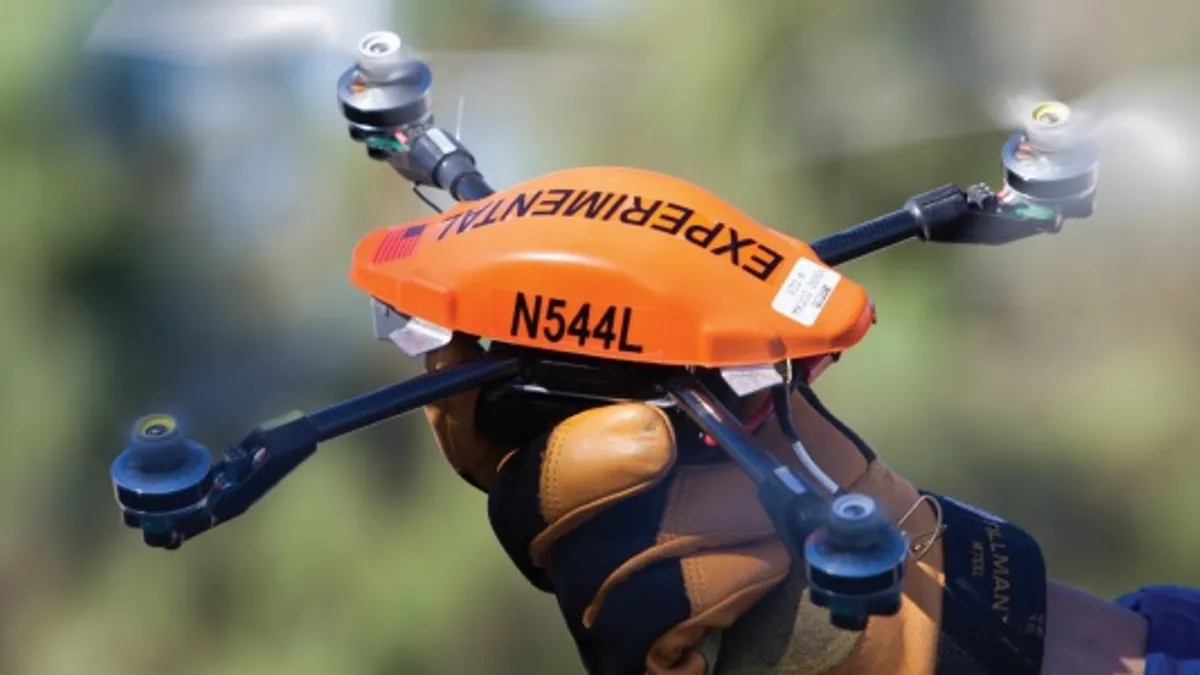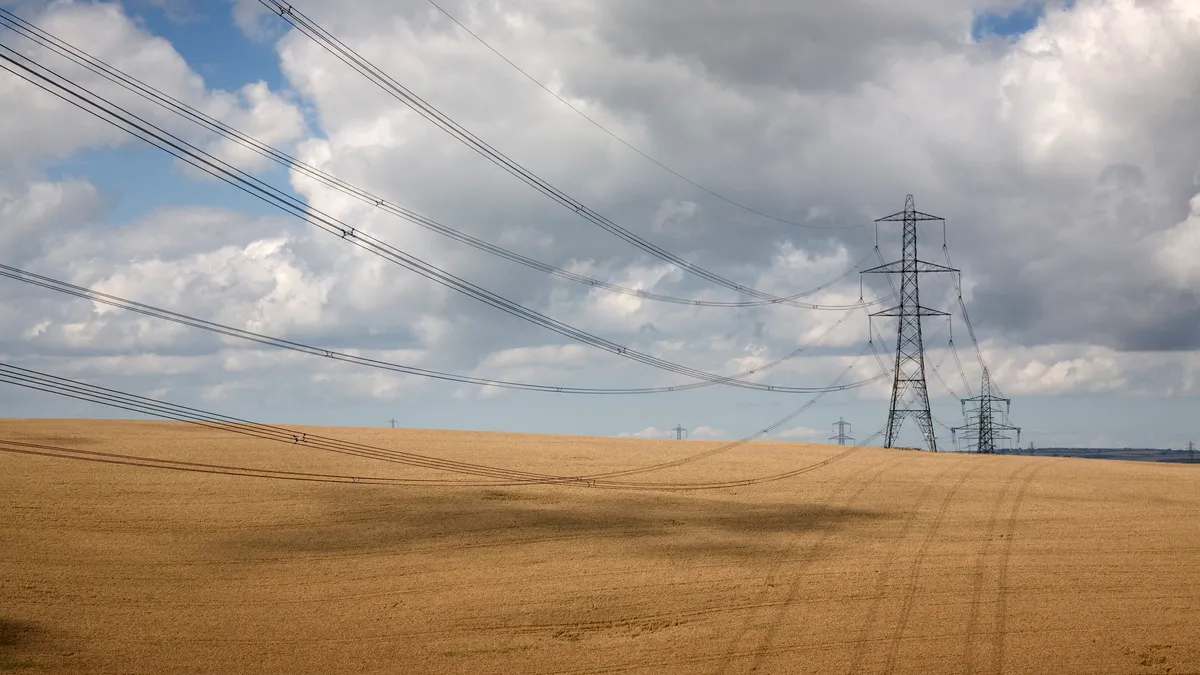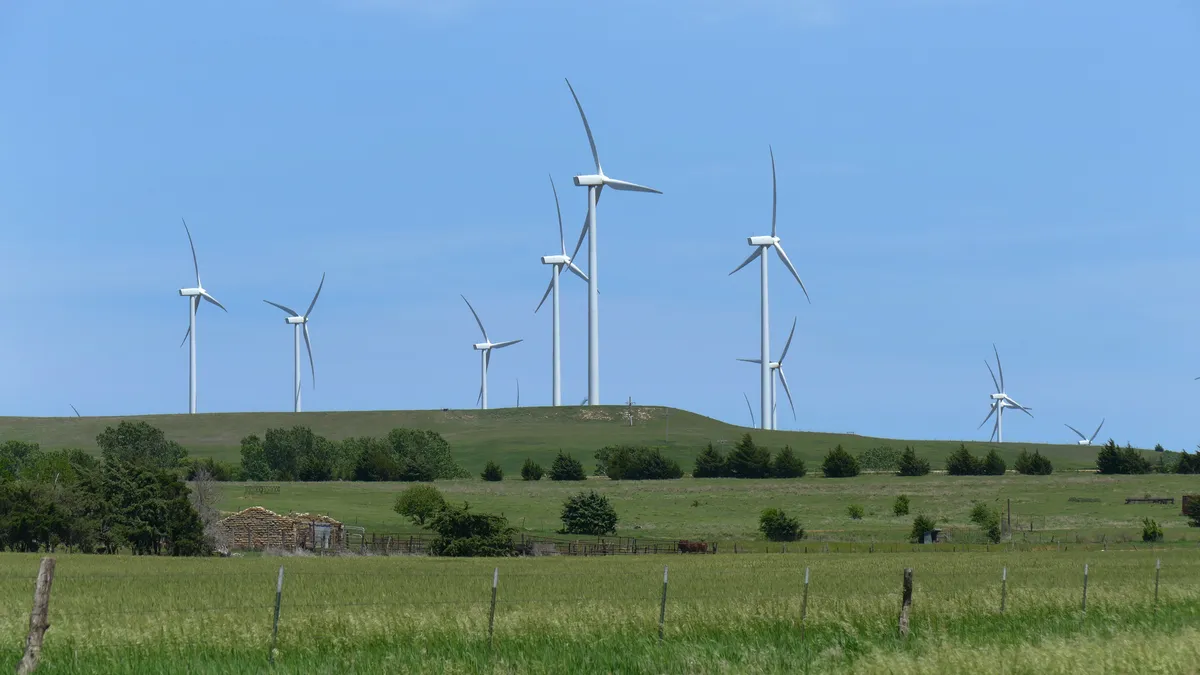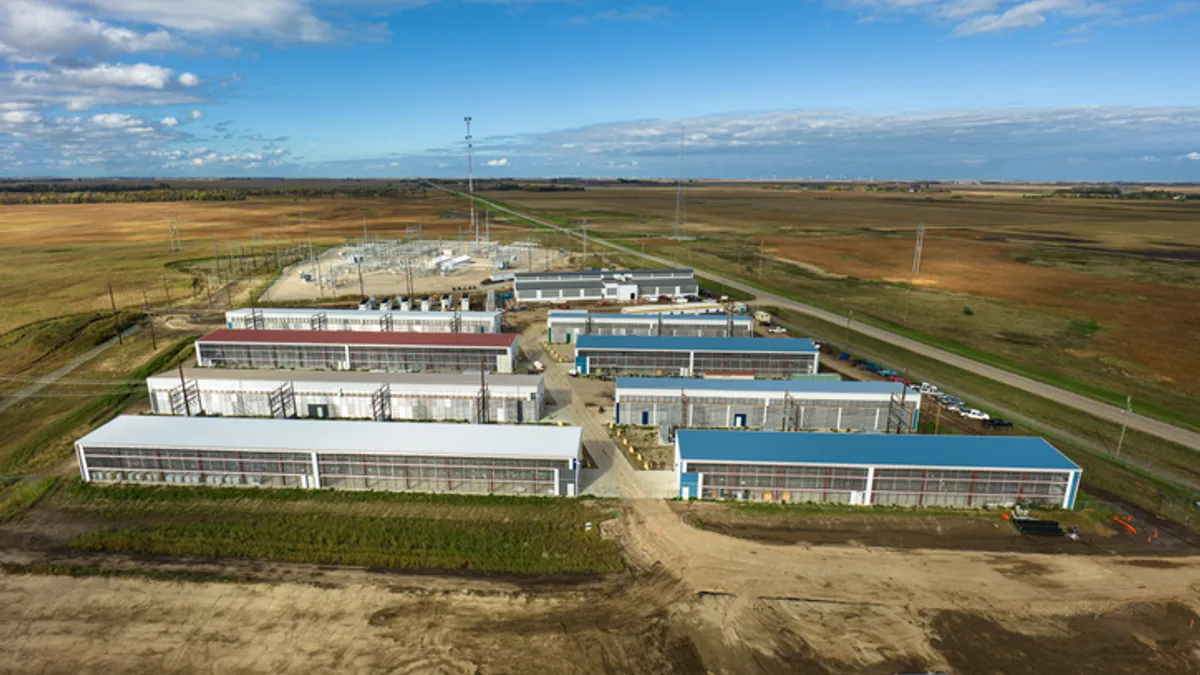With apologies to Clint Eastwood, a utility's got to know its limitations.
The use of drones — small, unmanned aerial vehicles — to inspect transmission lines and other infrastructure is widely expected to help make the electric industry safer and more reliable. But given the scope of the grid (almost 6 million miles of distribution and transmission lines in the U.S.), getting full value from the technology is a challenge for utilities.
AES Corp. knows the difficulties of scale. The global energy company provides power in 17 countries, including ownership of two regulated utilities in the Midwest U.S., generation facilities in seven states, and hundreds of megawatts of utility-scale storage.
The company spent three years developing an in-house drone program before announcing this year that it would partner with Measure, a "Drones-as-a-service" operator, to expand the inspection pilot across its entire operation. The move is part of a growing trend of utilities turning to technology service providers for solutions outside their core competencies. And according to AES CTO Chris Shelton, working with Measure illustrates the company's method of scaling up innovations from other industries.
"The focus with the drone work is really a focus on designing out hazards from the work environment," said Shelton. "Drones and unmanned systems have a great ability to do that … but we recognized we can really scale it up with a service provider. Flying a drone is not core to the electric industry."
AES has already logged more than 3,000 flights in 10 countries, reducing hazards across 15,000 hours of work. The partnership with Measure aims to double those hours and augments staff AES has already established. And while safety is the primary driver, as drone-enabled monitoring tools evolve the impacts are growing.
"The interesting part of this is, when you focus on safety like this you can also improve the uptime of your assets," said Shelton. "So not only are we attacking the safety hazards but we're also improving the availability of the assets."
It was less than three years ago when the Federal Aviation Administration approved the first utility drone program, for San Diego Gas & Electric. Since then, many utilities — including Commonwealth Edison, Southern Co. and Xcel Energy — have begun working with unmanned aircraft to examine power lines and monitor foliage.
The current batch of authorizations put strict limits on where and how utilities can operate drones, typically over property they own and only within line of site of the operator. But last year Edison Electric Institute partnered with drone developer Sharper Shape to demonstrate that flights beyond visual line of sight can be safe, which could dramatically increase drone capabilities.
And as more utilities begin to integrate drone operations, AES may see another benefit from its early-adopter approach: avoiding a possible shortage of drone operators.
A report earlier this year from Oak Ridge National Laboratory on utility drone use serves up a "cautionary note" from the military's growing use of unmanned aircraft in the last two decades.
"Military commanders’ insatiable demand for drones to satisfy their infinite tasking requirements resulted in only about half of their requirements being fulfilled," researchers noted. "It is believed that electric utility crews, engineers, and planners will require a similar demand outcome once [Unmanned Aerial Systems] are fully integrated into the rebuilding, maintenance, and repair of the national grid."
"It's a general approach AES takes to innovation, which we call 'Lead User,'" said Shelton. "We started using this technology a while ago, but we focused on the business impacts of the technology. And once we started to see the fruits of that, we really want to focus on scaling."
"We took a similar approach to lithium ion batteries," said Shelton. "There are a lot of technologies that are maturing, and when they get introduced to the electric industry they can have a big impact."
Utilities turn to service providers
AES's turn to a third-party provider for drone services illustrates a larger trend in the power sector. As the electric grid becomes more complex, utilities are increasingly having to choose between developing new capabilities and finding partnerships. From web site and app design to data analytics and drone operation, the new skillsets often have little to do with maintaining a distribution system.
Data analytics and behavioral demand management programs are another common example — designing interfaces that engage customers and aggregate flexible demand. New rules allowing utilities to capitalize cloud-based services could accelerate adoption of these software-based solutions. Pager-based, one-way demand response networks are being phased out, and while utilities could often install and manage those on their own, some are now looking to companies like AT&T and Nokia to custom build networks.
Navigant Associate Director Aida Hakirevic previously told Utility Dive the shift "has become noticeable over the last few years.
"The majority [of utilities] favor buying over building IT solutions," she said. "We're seeing a shift away from the traditional model.”
“Any time a really smart provider on the tech side can come and assist them, I think [utilities] will be open to it," said SmartEnergy founder and CEO Juliet Shavit. "Some utilities have very sophisticated IT departments, but the overall trend is to get some support because it’s not their core competency."
Drone capabilities growing
AES's partnership with measure could be a sign of things to come in the industry. A report from Navigant Research projects significant growth in the utility market for drone and robotics technologies through 2024, in part due to the growing use cases. The firm predicted global annual revenue from the drone and robotics sector will rocket from $131.7 million in 2015 to $4.1 billion in 2024.
Inspection capabilities now extend far beyond visual checks of transmission lines, said Shelton.
"You can get a birds eye view with sensors outside of the visible light spectrum," he said, allowing the company to find hot spots in a solar field. "That allows you to do do maintenance much more efficiently, to find the right panels to replace. And ultimately that results in a much more efficient solar field, with much more proactive maintenance versus a traditional approach which would be to test each panel."
Measure will be coordinating with AES to inspect energy infrastructure in the United States and internationally, and across the company's entire range of infrastructure assets, including renewable and thermal generation, transmission and distribution lines, and pipelines.
"Drones will enable the energy industry to shorten down times, lower potential energy costs to the consumer, reduce hazardous man hours, and benefit from higher quality inspection data products," Measure Chief Operating Office Jesse Stepler said in an explanation of the partnership. "Overall, there will be an improvement in safety, reliability, and productivity."
AES is working to add other drone-enabled monitoring services later this year, he said. Other potential applications could include foliage analysis, inventory estimates, and examining materials movement around construction sites. Underwater drones could be used to examine intake pipes, keeping divers out of the water.
“For me it's about scale," said Shelton. "Working with Measure is a faster way to scale something that has the opportunity to improve safety and business performance. You could try to scale it yourself, internally … but the combination of a company specializing in the application of drones and a company that knows their industry like AES does — that combination is powerful."






















